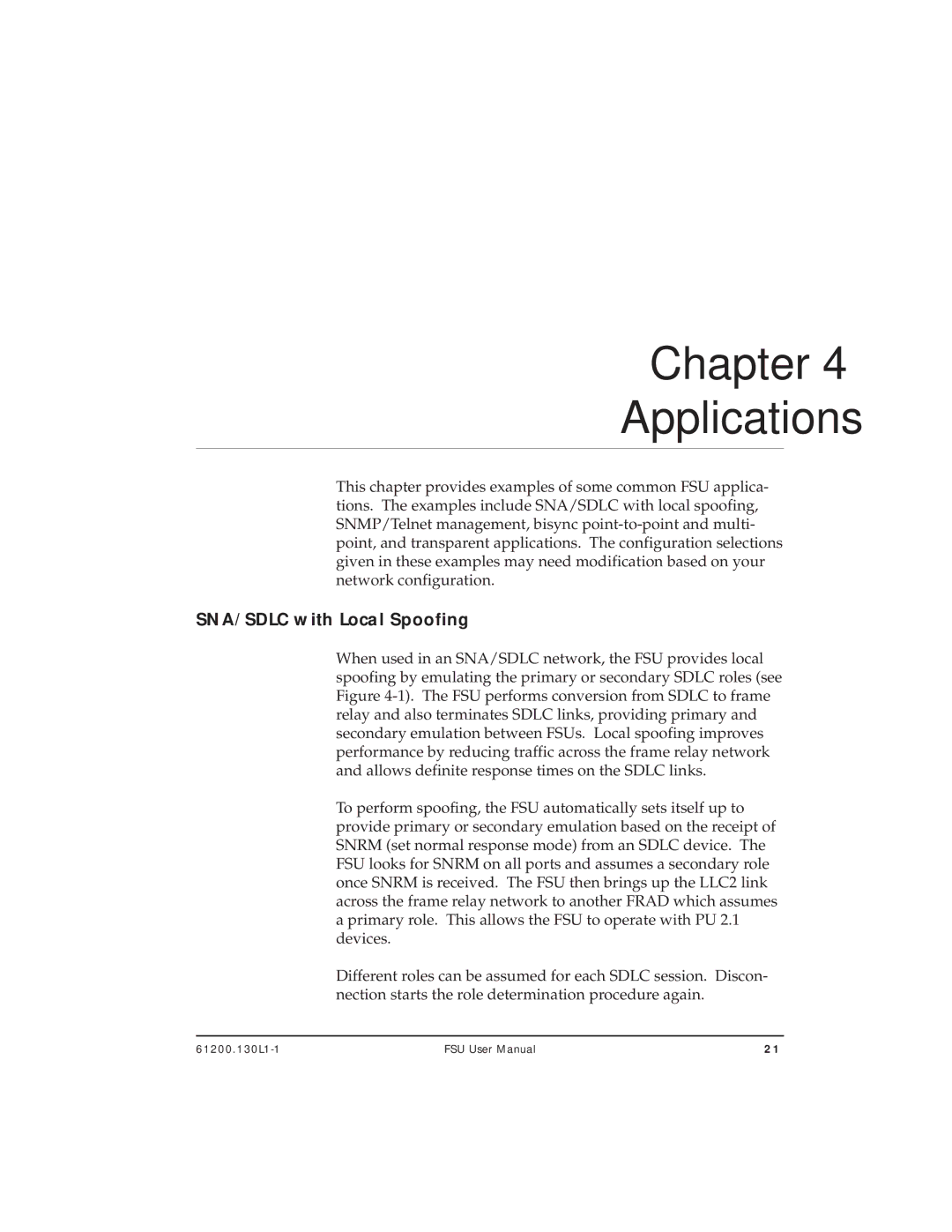
Chapter 4. Applications
Chapter 4
Applications
This chapter provides examples of some common FSU applica- tions. The examples include SNA/SDLC with local spoofing, SNMP/Telnet management, bisync
SNA/SDLC with Local Spoofing
When used in an SNA/SDLC network, the FSU provides local spoofing by emulating the primary or secondary SDLC roles (see Figure
To perform spoofing, the FSU automatically sets itself up to provide primary or secondary emulation based on the receipt of SNRM (set normal response mode) from an SDLC device. The FSU looks for SNRM on all ports and assumes a secondary role once SNRM is received. The FSU then brings up the LLC2 link across the frame relay network to another FRAD which assumes a primary role. This allows the FSU to operate with PU 2.1 devices.
Different roles can be assumed for each SDLC session. Discon- nection starts the role determination procedure again.
FSU User Manual | 21 |
